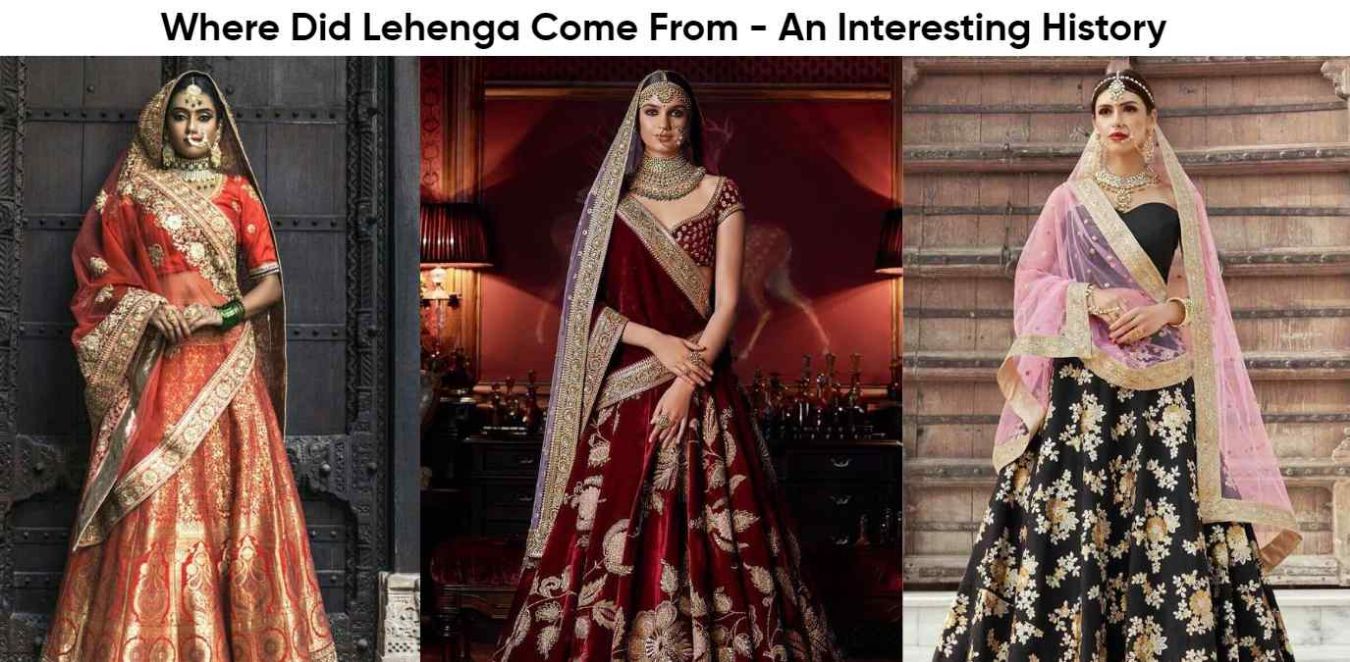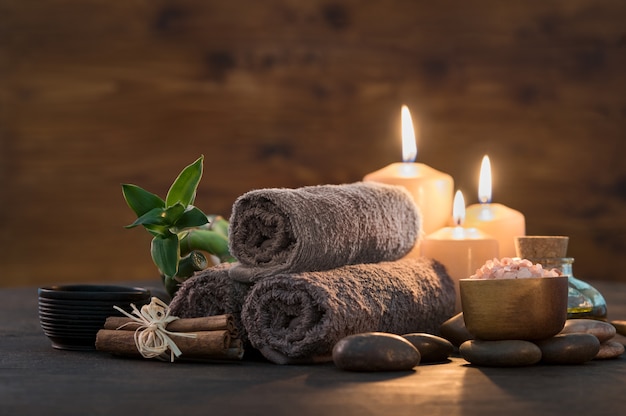Where Did Lehenga Come From? - An Interesting History
Lehenga Choli, or lehenga as Indians commonly call it, is Indian ethnic wear. It mainly consists of three pieces and has been famous for generations in the country.
This outfit comprises a lehenga, a long flared skirt, choli, a well-fitted embroidered blouse, and a dupatta. It is a long cloth that women place over their shoulders in various ways to add more elegance.
You might have noticed actresses wearing mesmerizing lehengas in various Bollywood movies. The outfit is especially common during the wedding season.
A heavily embroidered lehenga is surely a feast for the eyes. Indeed it can leave the onlooker awestruck. But have you ever wondered where did lehenga come from?
Well, this attire has evolved steadily since the 10th century. It boasts of an exciting history that makes up for an interesting read. Let us take you on a fascinating journey of lehenga evolution.
Who Invented the Lehenga?

Image source: Pinterest
There must undoubtedly be a point in your life when you wear a lehenga. Indian women love to wear this beautiful outfit. The vibrant hues and intricate work on them can make anyone fall in love with them.
The modern designer lehengas of today are a lot different from what they used to be back in the 10th century. Yes, this attire is so old! So, you may ask, what is the origin of lehenga? Its roots go back to when Mughals started to rule over the Indian subcontinent.
Since then, this outfit has consistently evolved. At that time, it was the attire of the royalty.
The Influence of the Mughals
In the beginning, women in North India wore this garment. During the 12th to 18th century, the lehenga changed a lot. The initial form of this attire was primarily stitched from cotton.
Slowly, royal embroideries and fabrics like brocade and silk started to be used. It is what led lehenga choli to become the outfit of the elite. In the Mughal times, women wore a three-piece attire.
It is comprised of the pajama, peshwaj, and the dupatta or patka. This outfit showcased their Persian heritage. If you see the picture of this three-piece garment, you'll notice that it resembles a modern kurta-churidar outfit.
Lehenga During the Rajput Period
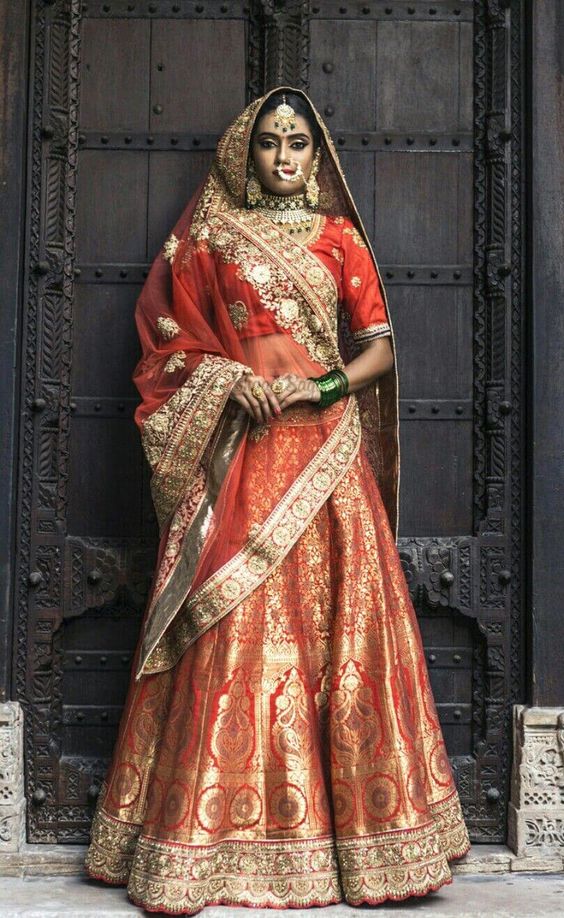
Image source: Pinterest
The attire that the Rajputs wore was quite similar to the Mughals. However, the Rajputs included a white cloth in this garment. They attached it to the skirt and named it patka. The whole lehenga choli began to be known as antriya.
Lehenga after the Mughals
Although the decline of the Mughal era led to an age of turmoil and distress, the lehenga choli continued to evolve. Women started wearing flared umbrella-style lehengas.
But they were poorly stitched and kept in place with a girdle. In north India, this style was quite famous mainly because it was a part where Mughals held considerable sway.
Women belonging to the higher class wore lehengas that were created from very costly materials. On the other hand, lower-class women mainly wore those that were made from cotton or khadi.
In simple words, women of all social standing wore lehengas. But the pattern and fabric were closely aligned to their cultural background.
Lehenga choli continuously evolved during the 19th and 20th centuries. But one could observe wide variations across states. Gujarat came up with mirrorwork and patchwork lehenga, while Rajasthan specialized in the classic Gota Patti and Kundan work.
History of Lehenga Choli during the Time of the Independence Movement
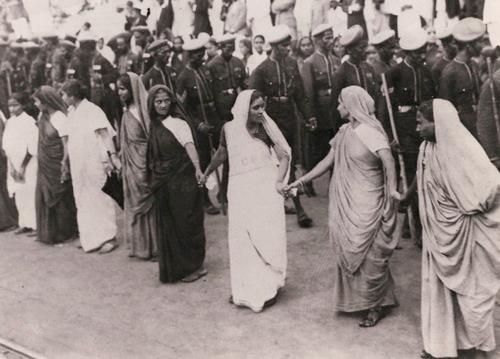
Image source: Pinterest
During this period, there was a fall in the popularity of the lehenga choli. It was mainly because saree became the most common choice for women instead of this garment. One could observe only rural women wearing lehengas. But they were not a part of bigger cities.
After attaining independence from the British Raj, not many women wanted to wear lehengas. At that time, every woman, be it a Bollywood actress or a TV star, preferred a saree over a lehenga. But all of this changed in the early 1990s.
Lehenga Evolution in the Early 1990s
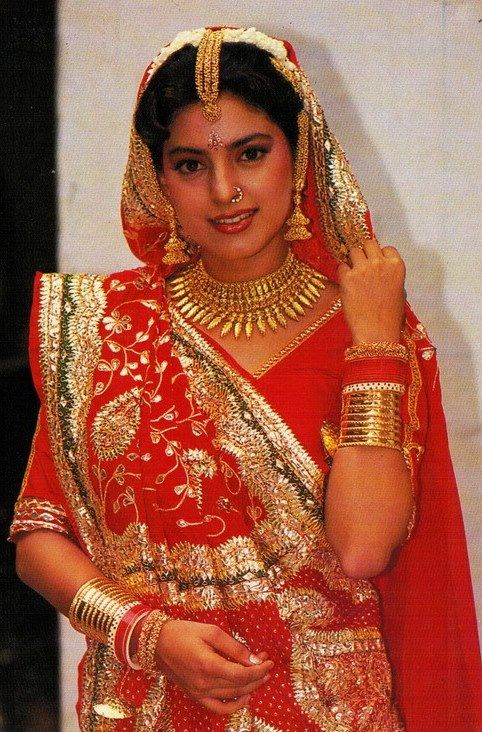
Image source: Pinterest
Lehenga choli came back into the fashion scene with a bang in the 1990s. One of the major influences behind its rising popularity was the big-budget Bollywood films with extravagant wedding scenes. That was only the start. Soon, this attire became a norm on the runaway.
Designers experimented continuously, as a result of which numerous styles and varieties of this attire started appearing. From straight lehengas, panelled lehengas, A-line, to fishtail lehengas. The 1990s were all about massive experimentation.
After about 20 years, the 2010s witnessed another major style revolution. This was the age of lehenga sarees, Anarkali lehengas, and gown lehengas. This fusion of two garments into one led to the creation of a lot of alluring styles.
Which State is Famous for Lehenga?
Women commonly wear lehenga choli or lehenga in the Indian states of
- Gujarat,
- Rajasthan,
- Bihar,
- Uttar Pradesh,
- Madhya Pradesh.
- Punjab,
- Haryana,
- Jammu & Kashmir, and
- Uttarakhand
Women in Punjab wear lehenga with a Kurti. This garment is a combination of lehenga and choli, a blouse.
Today, people use the term lehenga choli more commonly than the term Ghagra, which also means the lehenga. It's because the latter has become more synonymous with half-slip, which women wear as an undergarment under their saree.
In India as well as in the entire world, lehenga choli always brings up the images of the vibrant heritage of Rajasthan and Gujarat.
The Bandhani printed necktie and colorful ghagra cholis are famous everywhere in India. The fabric of these clothes is unadulterated cotton. Apart from that, silk is also used.
Some other designs that impart an ethnic look to ghagra choli are mangalgiri, kalamkari, and Maheshwari. Indian women lovingly wear a lehenga choli on occasions like weddings and festivals like Navaratri, Dussehra, and Eid.
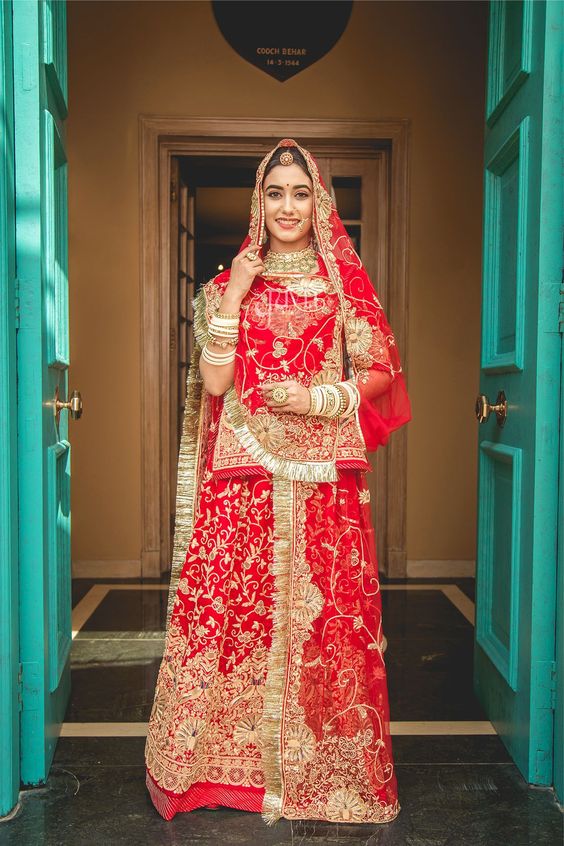
Image source: Pinterest
What are the Different Types of Lehenga?
By now, you must be fully familiar with what is lehenga choli. This garment is constantly changing with time. Cultural influences from different regions impact this style and design.
Today, there are various lehenga choli versions. You can mainly find lehenga in three types: gharara, sharara, and lancha. All three are bottom garments and originated in the 18th and 19th centuries.
A similarity in all of these three garments is that they are three-piece outfits. But they are not totally the same.
The Difference Between Sharara and Gharara
But the sharara has a joint at or below the knee level. Both sharara and ghagra resemble flared pants. They were immensely popular during the 18th and 19th centuries, before the independence movement.
Today, they are an integral part of wedding ensembles in majorly Muslim communities. A difference between sharara and gharara is that while the former falls straight and looks like a skirt, the latter fits somewhere above your knee. It then flares.
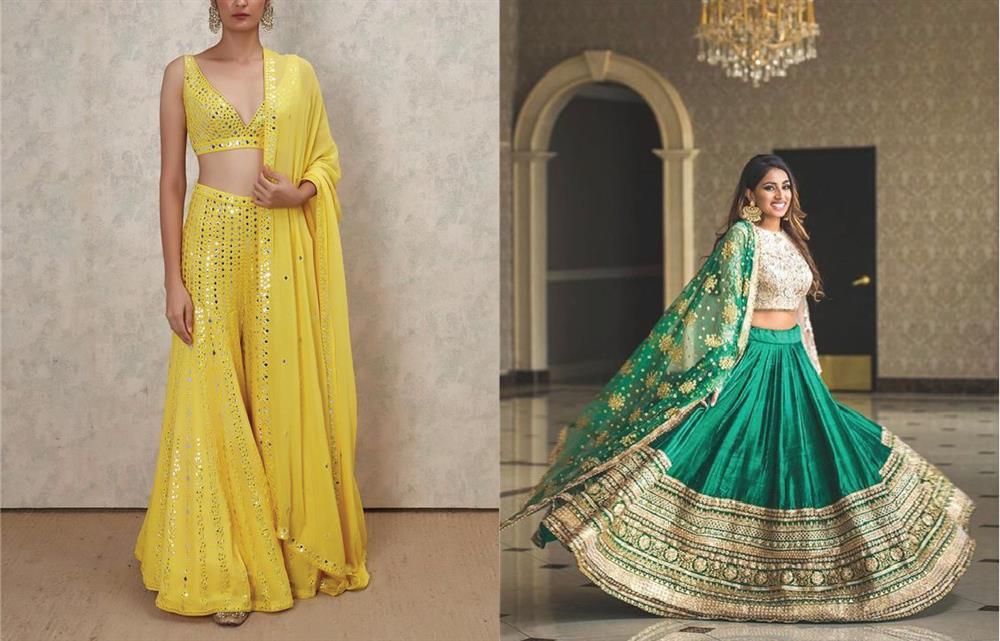
Image source: Pinterest
What Is the Difference between Lehenga and Lancha?
Women pair lehenga with a choli. As you already know, choli is a small blouse which reveals some part of the stomach area and the back. On the other hand, lancha has a somewhat longer blouse.
It is not as short as choli. The blouse covers your whole stomach and the back area. You can also find lancha extending below the hips. Today, this new avatar of lancha has got the name of melange.
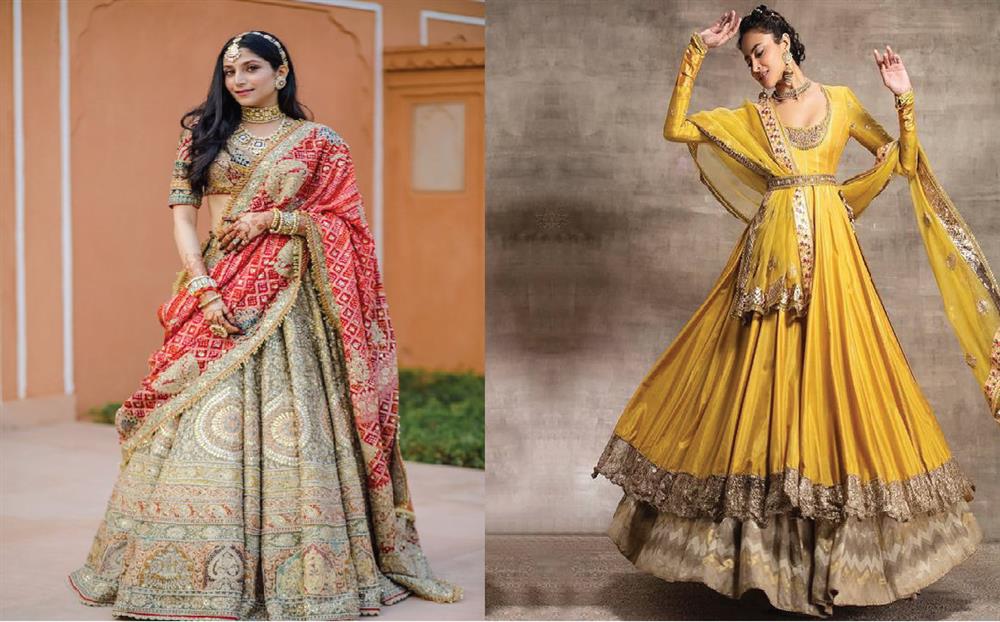
Image source: Pinterest
Types of Embroidery in the Modern Lehenga Choli
Bridal lehengas of today are lavishly ornamented with embroidery. Let's take a look at the different types of embroidery that make them so eye-catching.
1. Zari
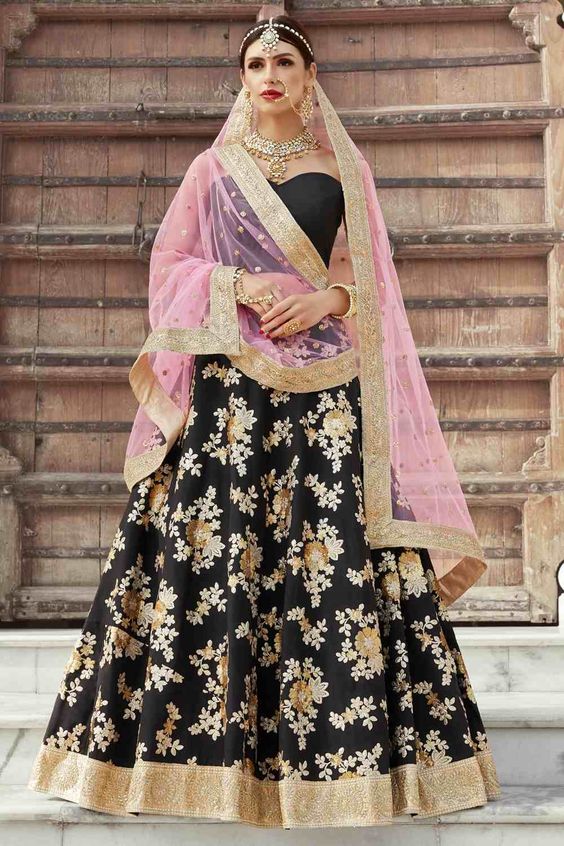
Image source: Pinterest
Zari embroidery results in the creation of dense motives and intricate garments. It is a traditional Indian embroidery, which is basically a detailed form of threadwork. Zari work makes a lehenga look highly precious and enhances its monetary worth.
2. Zardosi
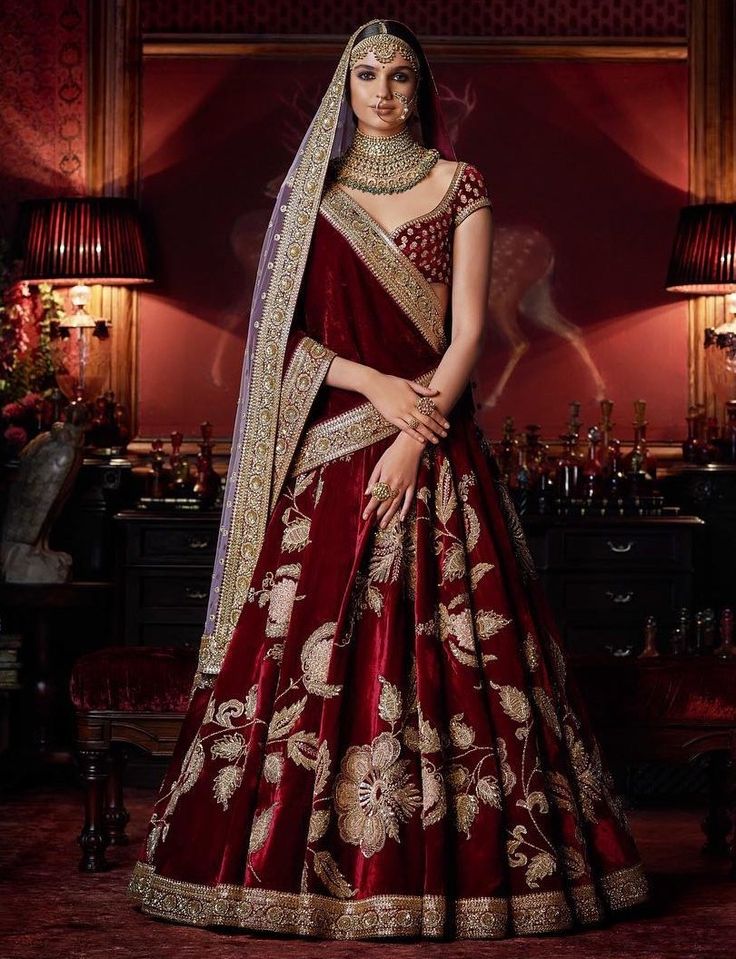
Image source: Pinterest
It is a highly elaborate and more decorated variant of zari embroidery. In lehengas featuring zardosi work, you can find beads, Gota Patti, and precious pearls. They are etched with gold threads on satin and silk fabrics. You can find zardosi work primarily in heavy lehengas.
3. Chikankari
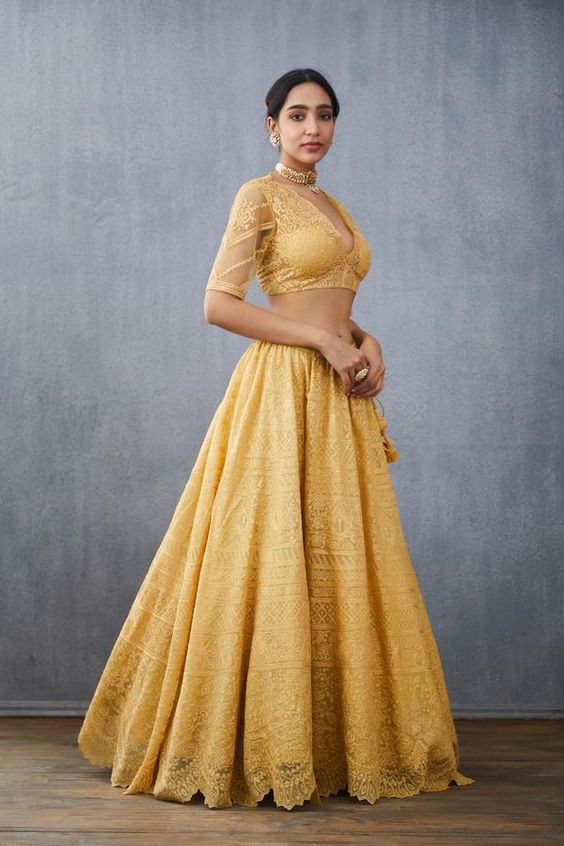
Image source: Pinterest
Chikankari translates to embroidery. It's precise handwork that imparts an elegant and classy appearance to a piece of fabric. Chikankari craft consists of unique and detailed usage of floral patterns.
4. Gota Patti
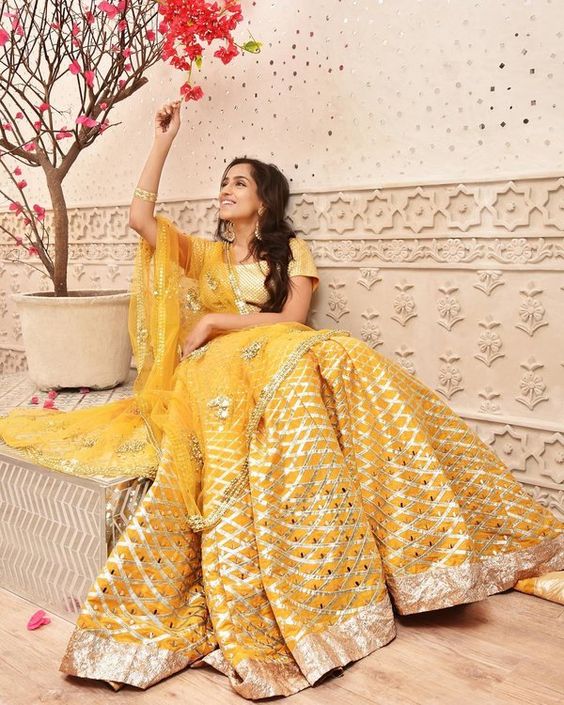
Image source: Pinterest
It is a prominent part of the Rajasthani heritage. It has Mughal roots, and gold and copper fibers are used in its making. Gota works look stunning when they get done on fabrics like velvet, silk, chiffon, and georgette.
5. Cut Dana
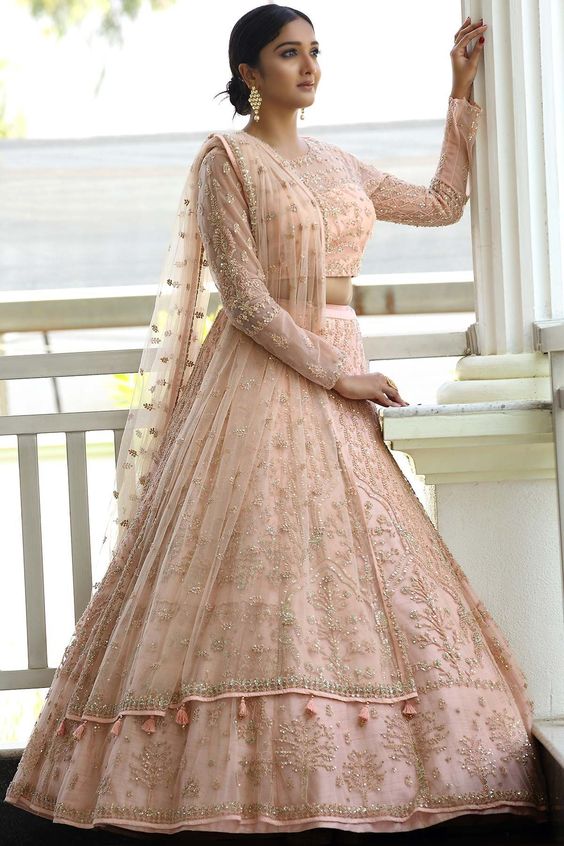
Image source: Pinterest
This work is done using beads and stone. The artist cuts the raw material in particular shapes so they can brilliantly reflect light. The figures are then mixed to build a great pattern. Then they get sewn in the fabric to impart a bridal appearance.
6. Mirrorwork Embroidery
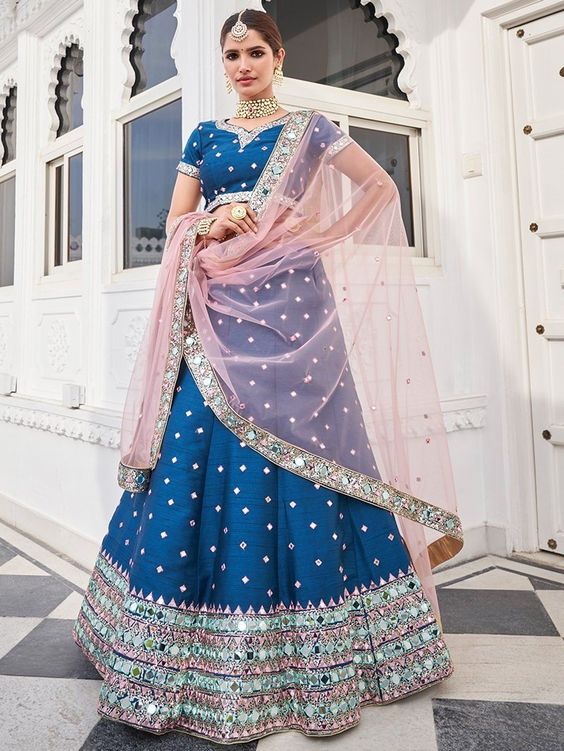
Image source: Pinterest
Mirrorwork or Sheesham embroidery consists of affixing minute mirrors and giving them a casing. The mirrors are set through a unique cross-stitch embroidery. Various shapes of mirrors like circular, square, hexagonal, and triangular result in diverse patterns.
Final Words
The question, where did lehenga come from, sure has an interesting answer, isn't it? Its history never fails to surprise the reader. Hopefully, you will appreciate this garment more and see it from a new perspective. The attire is versatile, and you can wear it on various occasions, be it festive or non-festive.





